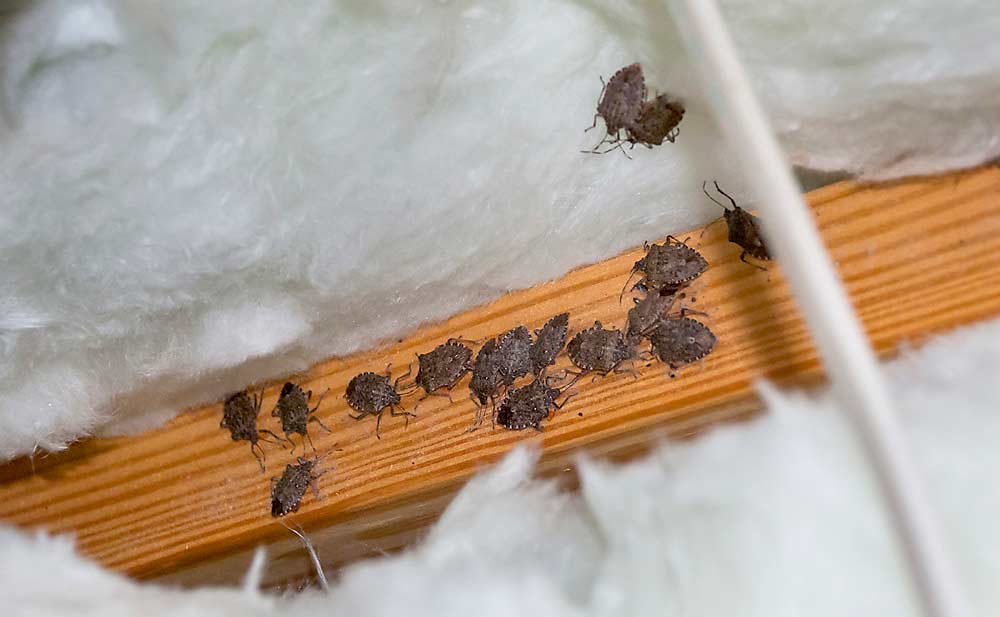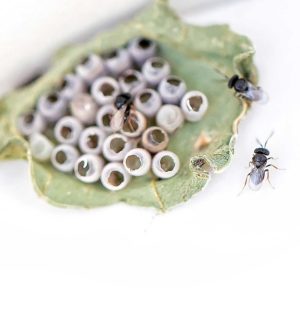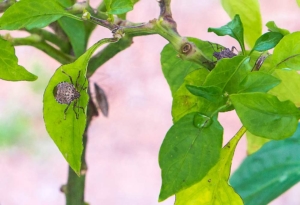
It’s been more than a decade since the brown marmorated stink bug exploded onto the scene in Mid-Atlantic states, catching growers and scientists off guard and damaging millions of dollars’ worth of specialty crops.
Since that unexpected population surge in 2010, the invasive species has been detected in at least 46 states, ranging from minor nuisance to severe agricultural pest in many of the country’s most important fruit-growing regions. And though the initial surge died down in the Mid-Atlantic, BMSB remains a significant agricultural pest in the region, requiring intensive management, said Jim Walgenbach, North Carolina State University professor of entomology.
“If growers were not employing specific management strategies, they’d be suffering serious economic losses,” he said.
Walgenbach is director of a national research project focused on BMSB management in specialty crops. In February, scientists from across the country summarized the current state of BMSB research during the project’s annual wrap-up meeting, which was held virtually. The five-year project, funded by the U.S. Department of Agriculture’s Specialty Crop Research Initiative, continued the work of an initial project that ran from 2011 to 2016, Walgenbach said. The current project will wrap up in 2022.
According to the speakers, BMSB populations are still spreading throughout the Midwest, Southeast, Northeast and West, but the intensity of the problem varies by growing region and crop.
Thanks to years of research, and information-sharing facilitated by the national BMSB project, growers and scientists have learned a lot more about the invasive bug’s strengths and weaknesses. Populations seem to balloon during hot, dry summers — not to the degree observed during the major outbreak of 2010, but certainly causing increased pressure for growers, said Tracy Leskey, a USDA entomologist.
As for BMSB’s weaknesses, really cold temperatures can kill off a good portion of the overwintering adult population. And as with other insects, abundant rainfall helps suppress populations. Natural enemies — including predators, parasites and a microsporidia organism — also play a population-limiting role, Walgenbach said.
The main management tool, however, remains broad-spectrum insecticides. Pyrethroids work well against the stink bug and are inexpensive. Use of that class of chemistry has risen considerably, and it’s replacing “softer” pest management programs. Before BMSB, pyrethroids were not applied to apples, for example, and their use has led to outbreaks of secondary pests such as European red mite, San Jose scale and woolly apple aphid. Researchers want to find nonchemical management strategies, the project leader said.
Tom Kuhar, an entomology professor at Virginia Tech, said a “whole slew” of pyrethroid insecticides are effective at BMSB management, and there’s no sign of the bug developing resistance to them. However, their efficacy drops off after about three days, requiring multiple sprays. Neonicotinoids are a potential alternative, but that class of chemistry is facing regulatory barriers.
One of BMSB’s natural enemies from its home continent of Asia followed it to North America. The samurai wasp (Trissolcus japonicus), first detected in the wild in Maryland in 2014, has now been detected in 12 states. Before the first wild detection, researchers were studying the samurai wasp in laboratories, hoping to get approval to release it as a classical biological control. Once the wasp is found in the wild in a state, regulators typically allow for population distribution within the state, but interstate transport is still not allowed, Walgenbach said.
The results of state-by-state distribution efforts have varied in the past few years, but multiple states have reported recaptures of overwintering samurai wasps, indicating that wasp populations are establishing themselves. The wasps are not spreading as quickly as researchers would like, but they show signs of significant levels of parasitism that could contribute to the mortality of BMSB populations, said Kim Hoelmer, a USDA research leader. •
—by Matt Milkovich








Leave A Comment